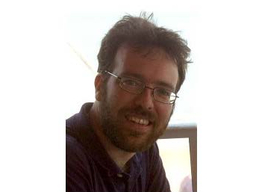Applied Mathematics Colloquium: Dr. Brian Camley
Johns Hopkins University
Location
Mathematics/Psychology : 103
Date & Time
September 21, 2018, 2:00 pm – 3:00 pm
Description
Title: Collective chemotaxis: signaling and mechanics
Speaker: Brian Camley, Johns Hopkins University
Abstract: Many eukaryotic cells chemotax, sensing and following chemical gradients. However, experiments have shown that even under conditions when single cells do not chemotax, small clusters may still follow a gradient. Similar collective motion is also known to occur in response to gradients in substrate stiffness or electric potential (collective durotaxis or galvanotaxis). How can cell clusters sense a gradient that individual cells ignore? I will discuss possible ``collective guidance" mechanisms underlying this motion, where individual cells measure the mean value of the attractant, but need not measure its gradient to give rise to directional motility for a cell cluster. One important aspect of collective chemotaxis is how cells process the gradient signal biochemically. I will show how the topology of these signaling networks can be constrained by simple experimental observations, reducing the space of possible minimal networks from millions to only a few possible candidates. Collective gradient sensing also has a new wrinkle in comparison to single-cell chemotaxis: to accurately determine a gradient direction, a cluster must integrate information from cells with highly variable properties. When is cell-to-cell variation a limiting factor in sensing accuracy? I provide some initial answers, and discuss how cell clusters can sense gradients in a way that is robust to cell-to-cell variation. Interestingly, these strategies may depend on the cluster's mechanics; I develop a bound that links the cluster's chemotactic accuracy and its rheology. This suggests that in some circumstances, mechanical transitions (e.g. unjamming) can control tactic accuracy.
Tags:
